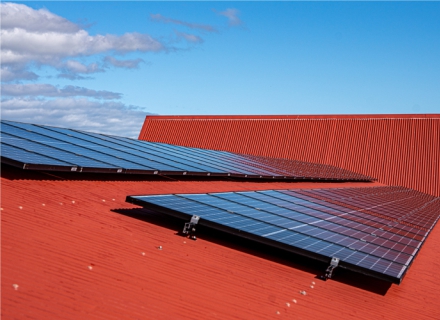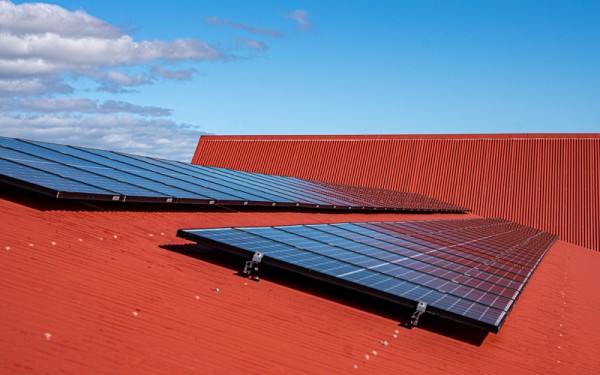TLC case study – sharing community renewable energy

A collaborative project to install and share solar energy is delivering a range of benefits for the community in Mōkau on the southern Waikato coast.
Operating one of the most geographically dispersed networks in Aotearoa New Zealand has its challenges, but for The Lines Company (TLC) it also brings opportunity. With advances in technology come new ways of serving its communities, and TLC has responded by being the first electricity lines company to trial an innovative peer-to-peer technology trading platform to share the benefits of renewable energy.

The project
In a collaboration with Te Nehenehenui and electricity retailer Ecotricity, and with funding support from MBIE, TLC has helped install an 18kW solar array on the wharekai at Māniaroa Marae, located near Mōkau. Integrated with a peer-to-peer trading platform, the project enables excess solar energy to be shared with five local whānau. The project team also provided energy education and in-home energy assessments for whānau to boost awareness of how they can maximise the benefits of the programme.
Utilising its Time of Use pricing system and line tariff incentives, TLC was then able to model and demonstrate the estimated energy savings for the five households in the project.
Community benefits
Within the first 3 months of the project, the community benefits became clear. During that initial period, the solar array generated 8405 kilowatt hours (kWh) of energy, of which 7325 kWh (87%) was returned to the network and gifted to the participating households. On average, these five whare each saved $100 per month on their energy bills – collectively this would equate to $6000 a year.
While these numbers will fluctuate depending on sunshine hours and how much energy the Marae use at different times of the year, the money saved on energy costs is able to be used for other essential living costs. Whānau are reporting improved household wellbeing; better access to efficient heating; and warmer, drier, healthier homes as a direct result of this project.
It also illustrated how the principles of Kaupapa Māori can ensure successful community outcomes with inclusive decision making, cultural alignment and community focus at the core. The project to capture energy from the sun is the beginning of a journey for sustainable practices on Maniapoto Marae. Enabling Iwi to create their own energy and share it with whānau is closely aligned to values around kaitiakitanga, whanaungatanga, and kotahitanga.
The pilot will run for 12 months in total, following which the Marae will continue to be able to utilise and share the renewable energy generated. The model is scaleable and able to be rolled out across New Zealand by other electricity lines companies working with Iwi and community organisations.

Network benefits
With a large network area to service, TLC is focused on building resilience while supporting emissions reduction. Along with the more immediate benefits of passive electricity generation from solar panels, the project has enabled TLC to gain greater insight into how supporting its customers with new energy solutions can address some of the more specific challenges it has in remote areas.
The project added resilience to TLC’s network, improving the reliability to customers in Mōkau who remain connected to the network. It has also allowed it to gear up for and learn more about two-way flow, as excess energy is fed back into the network.
Enabling and promoting solutions that allow the benefits of renewable energy generation to be shared also helps to keep people connected to the network to protect against the risk of the cost of maintenance and depreciation falling on fewer customers in some areas.
The project was announced as one of three finalists in the 2023 Energy Excellence Awards Community Initiative category, with the winner due to be announced in late August.



